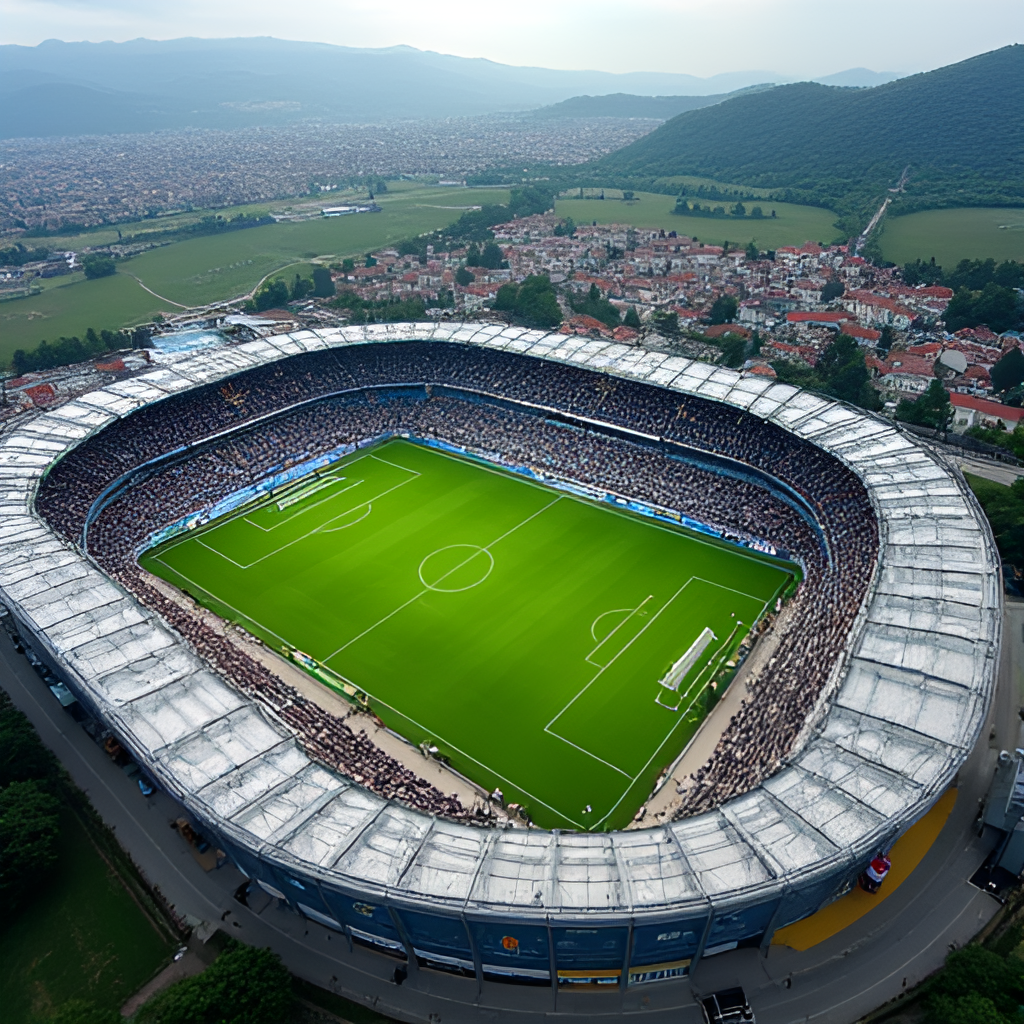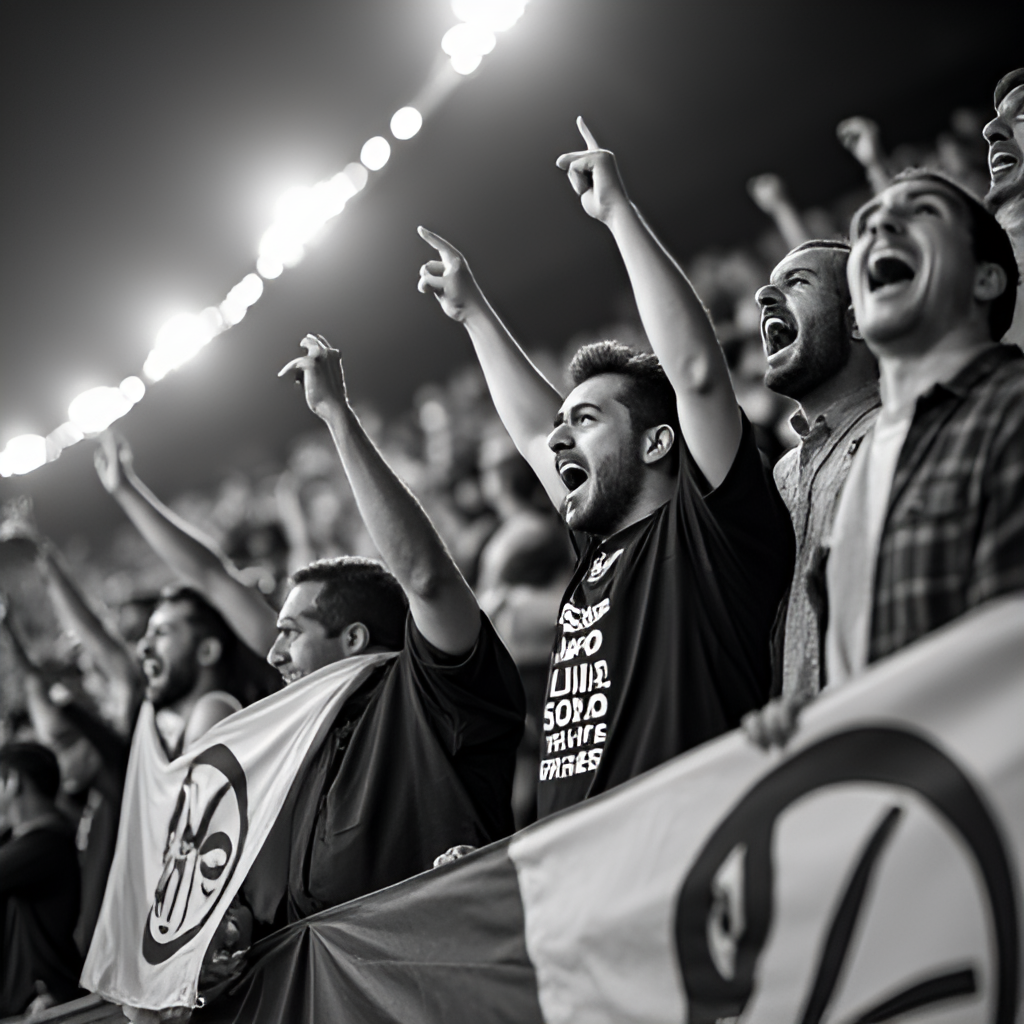Udinese Calcio: The Friulian Spirit in Serie A
- Udinese Calcio: A Journey Through Time
- The Bluenergy Stadium: Home of the Bianconeri
- Playing Style and Tactics
- Notable Players and Legends
- The Udinese Transfer Strategy: A Model for Success?
- The Passionate Friulian Fanbase
- Udinese Calcio: More Than Just a Football Club
Udinese Calcio is a professional football club based in Udine, Friuli-Venezia Giulia, Italy. My experience following Italian football has shown me that Udinese, often referred to simply as Udinese, holds a unique place in the Serie A landscape. Founded in 1896 as a sports club, it later established its football section in 1911, making it one of the oldest football clubs in Italy still in activity. The team, known for their distinctive black and white striped shirts, nicknamed “I Bianconeri” or “Le Zebrette,” competes in Serie A, the top tier of Italian football. While they haven’t lifted the Serie A title, Udinese Calcio has a rich history filled with memorable moments, a unique identity, and a dedicated fanbase that embodies the spirit of the Friulian region.
The Bluenergy Stadium: Home of the Bianconeri
The home of Udinese Calcio is the Bluenergy Stadium, formerly known as Stadio Friuli. Located in Udine, this all-seater stadium has a capacity of over 25,000 and provides an intimate atmosphere for fans to support their team. I’ve always believed that a club’s stadium is its heart, and the Bluenergy Stadium is certainly that for Udinese. It’s not just a place to watch football; it’s a symbol of the club’s pride and tradition, designed to bring supporters closer to the action.
The stadium underwent significant renovations, completed in 2016, transforming it into a modern facility while retaining its historical charm. The removal of the athletics track and the rebuilding of stands closer to the pitch enhanced the fan experience considerably. It’s one of the few club-owned stadiums in Italy, a testament to the club’s long-term vision. Walking around the stadium on a match day, you can feel the anticipation building, a sense of shared identity among the supporters.
Playing Style and Tactics
Udinese’s playing style has often been characterized by a pragmatic and disciplined approach. While tactics can shift depending on the manager, the team has frequently utilized formations like the 3-5-2 or 3-4-3, aiming to create chances through wide play and utilizing aerial presence in the final third. Based on recent reports, Udinese under manager Kosta Runjaić has shown a tendency to rely on long passes to move the ball up the pitch, focusing on defensive organization. This isn’t always the most possession-heavy style, but it can be effective, particularly against teams that push high up the pitch. My observation is that this approach requires a lot of teamwork and communication, something Udinese players generally excel at.
The team’s tactical approach also often involves leveraging the physical presence of their attackers during build-up play. This can make them a difficult side to break down and a threat on the counter-attack. While not always the highest-scoring team, their tactics are designed to be effective and resilient. It’s a style that reflects the hard-working nature often associated with the Friulian people.

This image is a fictional image generated by GlobalTrendHub.
Notable Players and Legends
Throughout its history, Udinese Calcio has been a launching pad for numerous talented players who have gone on to achieve success at the highest level. The club has a reputation for identifying and developing young talent, particularly from South America. Think of names like Alexis Sánchez, a dynamic forward who impressed at Udinese before moving to Barcelona and Arsenal. Bruno Fernandes, now a key player for Manchester United, also honed his skills in Udine. Other notable players who have worn the black and white include Fabio Quagliarella, Roberto Pereyra, and Medhi Benatia.
However, when discussing Udinese legends, one name stands out above the rest: Antonio Di Natale. “Toto” Di Natale spent twelve seasons with Udinese, becoming the club’s all-time leading scorer and a true icon. His loyalty and incredible goal-scoring ability endeared him to the fans and cemented his place in the club’s history. Seeing him play was always a treat; he had that knack for finding the back of the net when the team needed it most.
Udinese has also had players represent their national teams, with Lorenzo Bettini being the first player to represent Udinese on the Italian national team in 1955. The club’s ability to consistently produce players who reach the international stage is a testament to their scouting and development programs.
The Udinese Transfer Strategy: A Model for Success?
Udinese’s approach to the transfer market is well-known and has been a subject of discussion in the football world. The club, owned by the Pozzo family, is part of a multi-club ownership model that includes Watford in England and formerly Granada in Spain. This network has allowed Udinese to develop a unique scouting and player development strategy.
The core of their strategy involves identifying young, promising players from around the globe, often at relatively low costs, developing them at Udinese, and then selling them on for significant profits. This model has allowed the club to remain competitive in Serie A while also being financially sustainable. It’s a business model that focuses on long-term vision and adding value to players. While not every signing works out, the successes like Sánchez and Fernandes demonstrate the effectiveness of this approach. From my perspective, this strategy requires a keen eye for talent and a willingness to invest in potential.
The Passionate Friulian Fanbase
Udinese Calcio boasts a loyal and passionate fanbase, primarily from the Friuli region and the surrounding areas. Despite not having the widespread popularity of some of Italy’s giants, the support for the Bianconeri is deeply ingrained in the local culture. Match days at the Bluenergy Stadium are characterized by an electric atmosphere, with fans creating a vibrant backdrop for the team.
The Associazione Udinese Club (AUC) serves as a reference point for the Bianconeri faithful, promoting sports culture and the positive values of fandom. The connection between the club and the community is strong, and the fans’ unwavering support, through both the highs and lows, is a defining characteristic of Udinese Calcio. It’s a testament to the idea that football is more than just a game; it’s a part of people’s identity and a source of regional pride.

This image is a fictional image generated by GlobalTrendHub.
Udinese Calcio: More Than Just a Football Club
Udinese Calcio represents more than just a football club; it embodies the resilience, hard work, and unique spirit of the Friulian region. From its long history and the evolution of the Bluenergy Stadium to its shrewd transfer strategy and passionate fanbase, Udinese Calcio has carved out a distinct identity in Italian football. They may not always be in the spotlight, but their consistent presence in Serie A and their ability to nurture world-class talent speaks volumes about their well-run organization and dedication. My personal opinion is that Udinese Calcio serves as an excellent example of how a club can compete at the highest level by focusing on smart management, strategic development, and a strong connection with its community. As someone who appreciates the rich tapestry of Italian football, Udinese will always hold a special place, a symbol of enduring passion and strategic acumen.